The Shiba Inu is an adorable dog with a big temperament. These fox-like dogs love their owners with all their heart, but they would prefer if strangers left them alone. This combination of cuteness and shyness is what makes them so sought-after by dog lovers.
The only thing cuter than Shiba Inus are mini Shiba Inus, also known as Mame Shiba Inus. Yes, there is such a thing as a miniature Shiba Inu, and it looks as cute as you’d imagine it!
Despite some claims, Mame Shiba Inus are not a different dog breed, but simply a miniature version of standard Shiba Inus you know and love.
Mame means bean in Japanese, so Mame Shiba Inus can translate to bean-sized Shiba Inus. Their larger counterparts are an ancient breed that, despite its small size, is an astonishing working dog and watchdog.
They are one of the basal breeds from Japan, together with Akitas.
Mame Shiba Inus have inherited all of its ancestors’ history, lineage, and personality, so they can keep up with standard Shibas without a hassle.
Despite this, many dog lovers would argue that they don’t make good family pets due to their wild nature and temperament.
If Mame Shiba Inus sound appealing to you, you’re in the right spot. We’ll tell you all you need to know about this smaller version of Shiba Inus and explain why this might be the right (or wrong) dog for you.
What Is A Mame Shiba Inu?
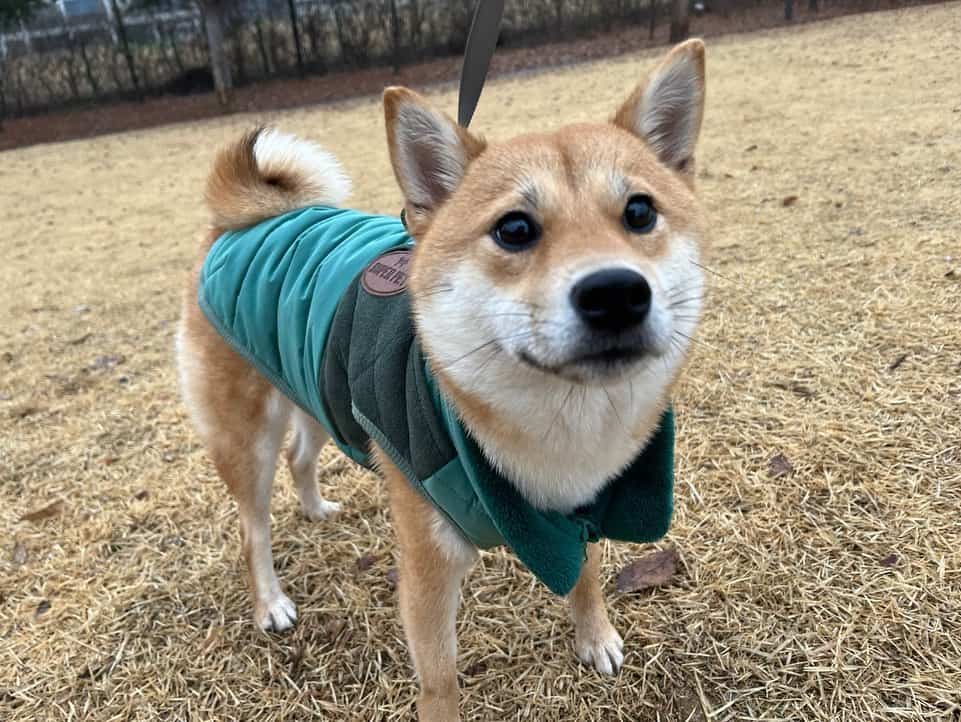
Photo from: @fallin_sarang
A Mame Shiba Inu is simply a mini version of a normal Shiba. The only difference between the two is its size as Mames come at a ‘bean size’.
It is believed that Mame Shiba Inus were first bred in Japan as small dogs are extremely popular in this Asian country.
Mame Shiba Inus are grown to be 35 to 50% smaller than standard Shiba Inus (you can see the expected height and weight range in the Shiba Inu growth chart).
Mame Shiba Inu’s small size makes them more suitable for living in small apartments; a type of commodity that’s common in Japan.
At first glance, you might mistake a Mame Shiba Inu for a small fox. This elegant appearance is what makes them one of the most beautiful dog breeds out there.
Not just that, but they are extremely sought-after as they are the perfect combination of the majestic Shiba Inu breed and small size. With their fluffy and tiny build and their warrior-like personality, they are an adorable mix that everyone seems to love.
Are Mame Shiba Inus The Same As Mini Shiba Inus?
In a way, Mame Shiba Inus and Mini (or Miniature) Shiba Inus are the same appearance-wise. There is also a common misconception that the term “Mame” is used in Japan and Mini is used in the EU and U.S.
However, this isn’t entirely true.
Mame Shiba Inus are usually bred by Japanese breeders who have experience in this dog breed, while Mini Shiba Inus is the term used by backyard breeders who are not familiar with the right terminology.
To get a Mame Shiba Inu, breeders will either mate two runts in the litter to keep their small size, or they’ll breed Shiba Inus with dwarfism. This is how they manage to get Shibas of such a small size.
On the other hand, Miniature Shiba Inus are often the product of crossbreeding Shiba Inus with other small dog breeds such as Pomeranians, mini Poodles, or Chihuahuas.
As such, there are some issues that might arrive no matter whether you get a Mini or a Mame Shiba Inu. While Mame Shiba Inus might be prone to some health issues related to their small size, crossbred Mini Shiba Inus won’t have the temperament you’d expect as they might inherit some personality traits from the other parent.
In any case, it is advised that you ask a breeder about the origins of a Mame Shiba Inu puppy that you’re planning to buy. A reputable breeder will always let you know all about their breeding practices, even if this means admitting that the dog has a genetic condition that causes their small size.
Mame Shiba Inu Genetics

Breeding small varieties of existing dog breeds is nothing new. Unfortunately, this is usually the result of unhealthy breeding practices, puppy mills, and backyard breeders who want to profit from producing unusual, yet unhealthy dogs, then selling them at much higher prices.
Is this the case with Mame Shiba Inus?
When it comes to these cutie-pies, there are two breeding techniques that we’ve already mentioned: The insertion of a dwarfism gene, or breeding runts of the litter.
We’ll explain the dwarfism gene first.
The dwarfism gene is a random mutation that can occur naturally in the Shiba Inus’ genetics. In fact, this gene is what causes their legs to be short and slightly curved. Something similar happened to short-legged dog breeds such as Dachshunds and Beagles.
For this specific gene to be effective, it is necessary for a puppy to inherit it from both parents. Only when this happens does a Shiba Inu grow to be much smaller than he should. The rest of his body, however, will look just the same as a regular Shiba Inu.
This breeding technique isn’t without its risks. Some dogs might develop structural deformities, most notably with their spine. This is a common issue with many toy breeds due to their elongated bodies, short legs, and heads that are too large for the rest of the dog’s skeletal system.
When it comes to breeding from runts, the breeder will breed the smallest and the weakest dog from the litter. This is done to create the smallest possible dog without inserting the dwarfism gene.
Some experts argue that this is the safer of the two options because the dog won’t have health issues related to the dwarfism gene. However, runts have their own set of health problems that can still make a Mame Shiba Inu’s lifespan shorter.
A common health problem associated with breeding runts is liver shunts, which result from irregularly developed blood vessels around the pup’s liver. At the same time, runts are more prone to parasites and all sorts of infections.
Of course, not all runts will develop these health problems. Many grow up to be entirely healthy. Still, this is a risk some aspiring dog owners are not willing to take.
Mame Shiba Inu Appearance And Coat Colors
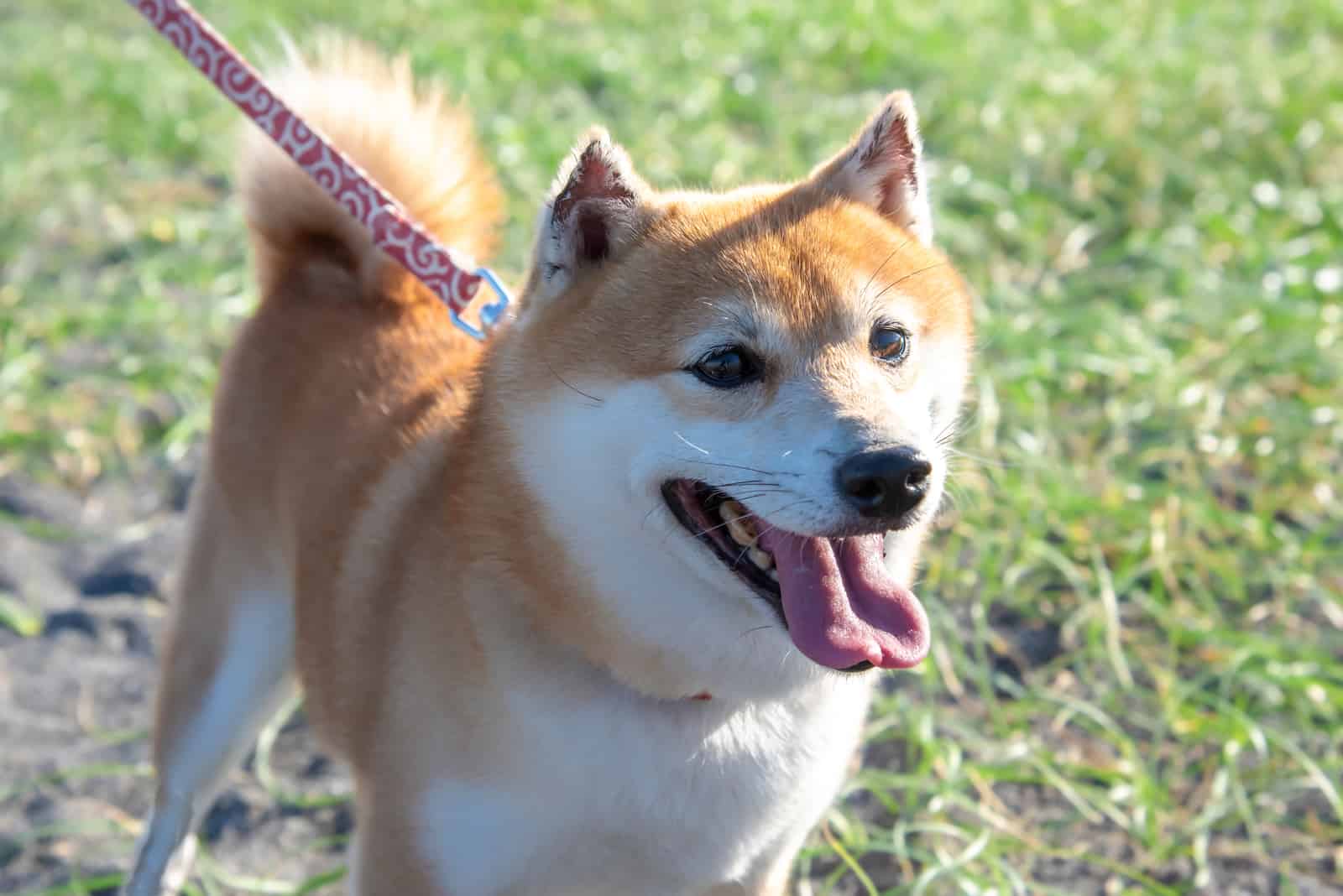
It’s easy to guess that Mame Shiba Inus look just like a smaller version of standard Shiba Inus. At the same time, however, they share a striking resemblance to their much bigger cousin, the Akita Inu.
While compact, they have a muscled frame, and their body is well-developed as one would expect from a working dog breed.
Their ears are triangular, and they have dark eyes. In fact, their head looks like the head of a fox, which is why many people confuse the two. They have a straight double coat, with the undercoat being thick and weather-resistant, while the outer coat is of medium length, straight, and stiff.
The dog’s coat color also impacts its appearance. While the Mame Shiba Inu is not truly recognized by the American Kennel Club (AKC), purebred dogs should always come in coat colors that are accepted in their larger cousins.
As such, you can have:
A Red Mame Shiba Inu
This is the most standard coat color of all Shiba Inus. In fact, experts assume this is the breed’s original color. Red Mame Shiba Inus truly look like miniature foxes.
The exact shade of red might vary anywhere from a pale red that almost looks like cream, to a deep, reddish-brown shade.
When it comes to standard Shiba Inus, this color is favored by the judges on dog shows, which is another reason why it’s so popular.
It isn’t uncommon for red Mame Shibas to come with Urajiro – white markings specific to the breed. These markings usually cover the dog’s belly, chest, and paws, but can sometimes spread to their muzzles.
Cream Mame Shiba Inu
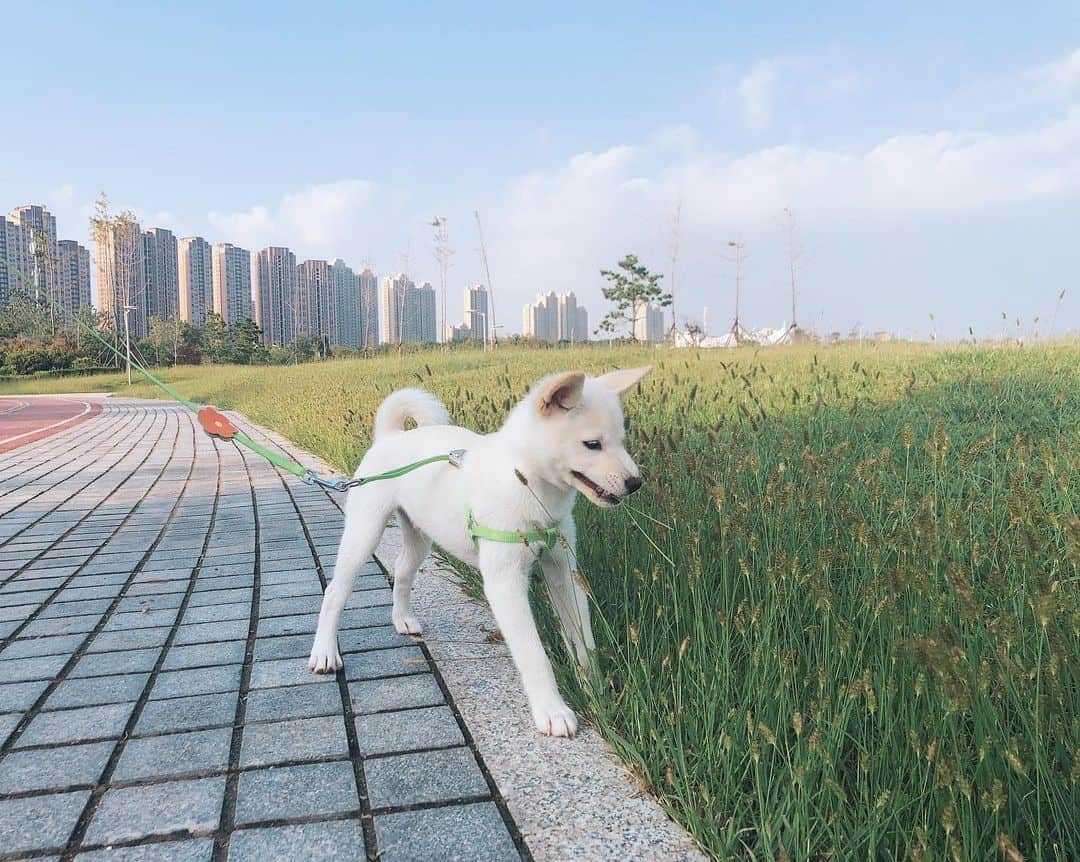
Photo from: @liiiilpotato
Despite their cute appearance, cream Mame Shiba Inus aren’t considered desirable. They are also rather rare as their coat color is the result of two recessive genes.
These dogs have a light, pale yellow coat with barely visible Urajiro markings. Some might even appear entirely white until they walk into the sun where the yellow tint will be more noticeable.
Sesame Mame Shiba Inu
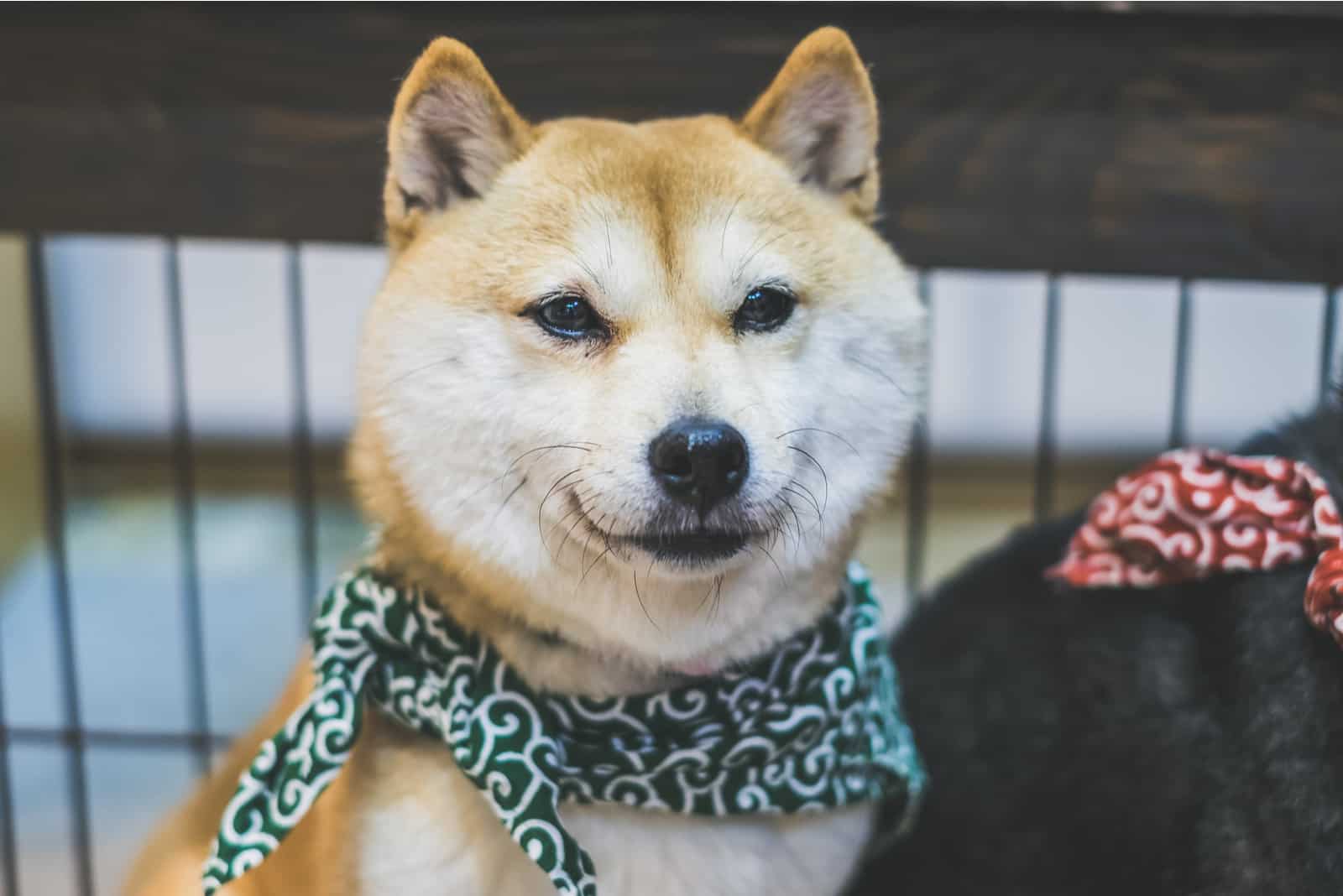
Sesame Shiba Inus are dogs with sable markings on their red base coat. In other words, their hairs have black tips that make it seem as if the dog is dusty or even muddy.
These sable markings aren’t evenly spread across the dog’s body, and he’ll usually have more of them on his back, upper legs, neck, and forehead. This will give the illusion that the dog is tricolored.
However, the sesame Mame Shiba Inu should never have black patches or masks. Such a pattern would be considered a flaw, and would mean the dog has likely been crossbred.
Black Mame Shiba Inu
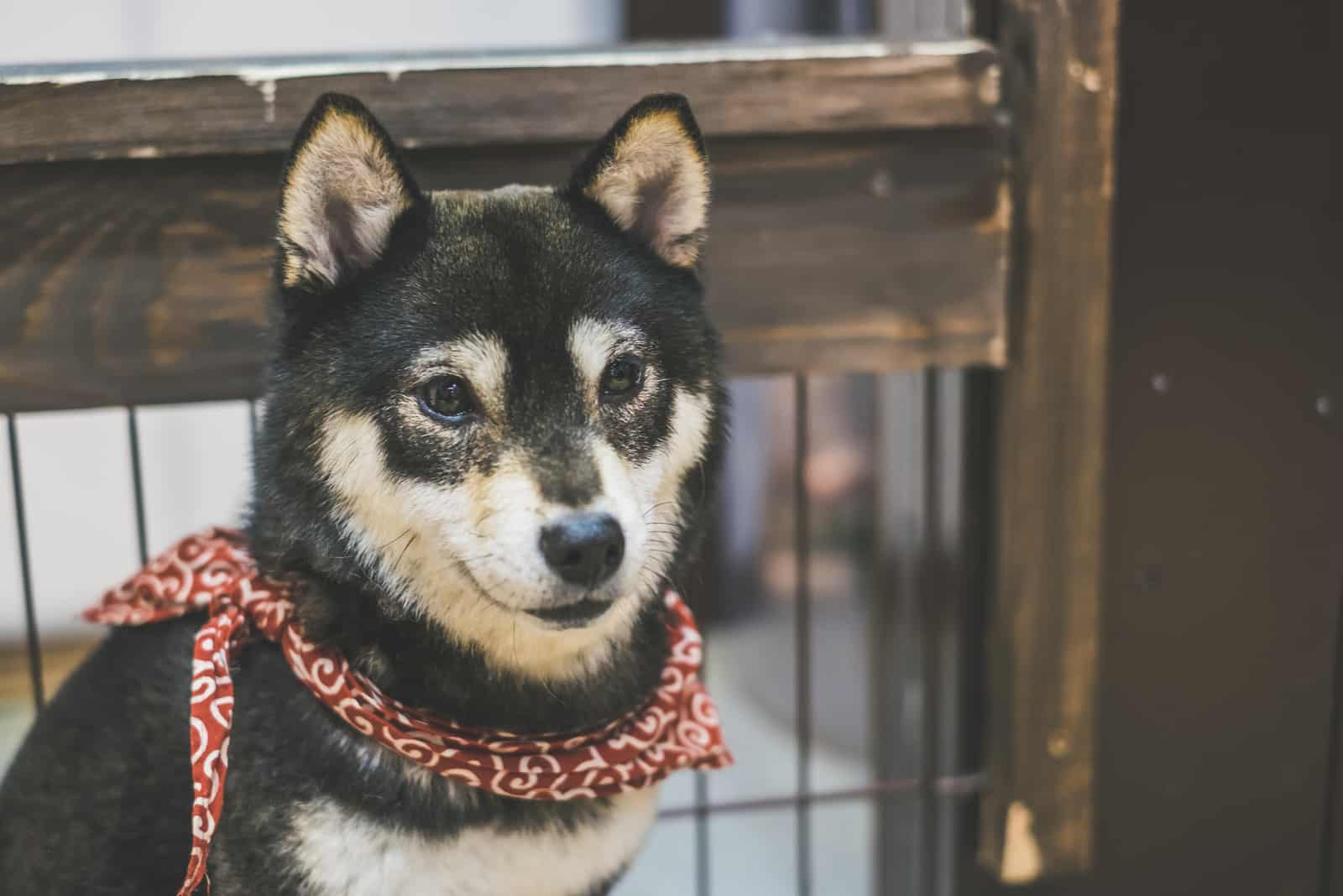
Despite being called black, these Shiba Inus are, in fact, tricolored. This is because they have a black base coat with tan markings on their paws, chest, cheeks, and eyebrows, but they also have traditional Urajiro markings.
Because of this, they are sometimes called black and tan Mame Shibas as well.
Sometimes, these pups might even come with a white base coat, a reddish middle coat, and black spots on their body. However, this is rare, and a standard black Mame Shiba should always be primarily black.
While not as common as red Shiba Inus, black Mame Shibas are very popular as they give dogs a unique, almost tropical look.
Male Vs Female Shiba Inu
Appearance-wise, there are some minor differences when it comes to male and female Mame Shiba Inus. Overall, a female Mame Shiba Inu will look gentler and more elegant, while males will look like they are more muscular and strong.
When it comes to the size of the female Shiba Inu, they are usually a bit smaller than males, although this difference would be challenging to notice just by looking at the dog.
Mame Shiba Inu Size
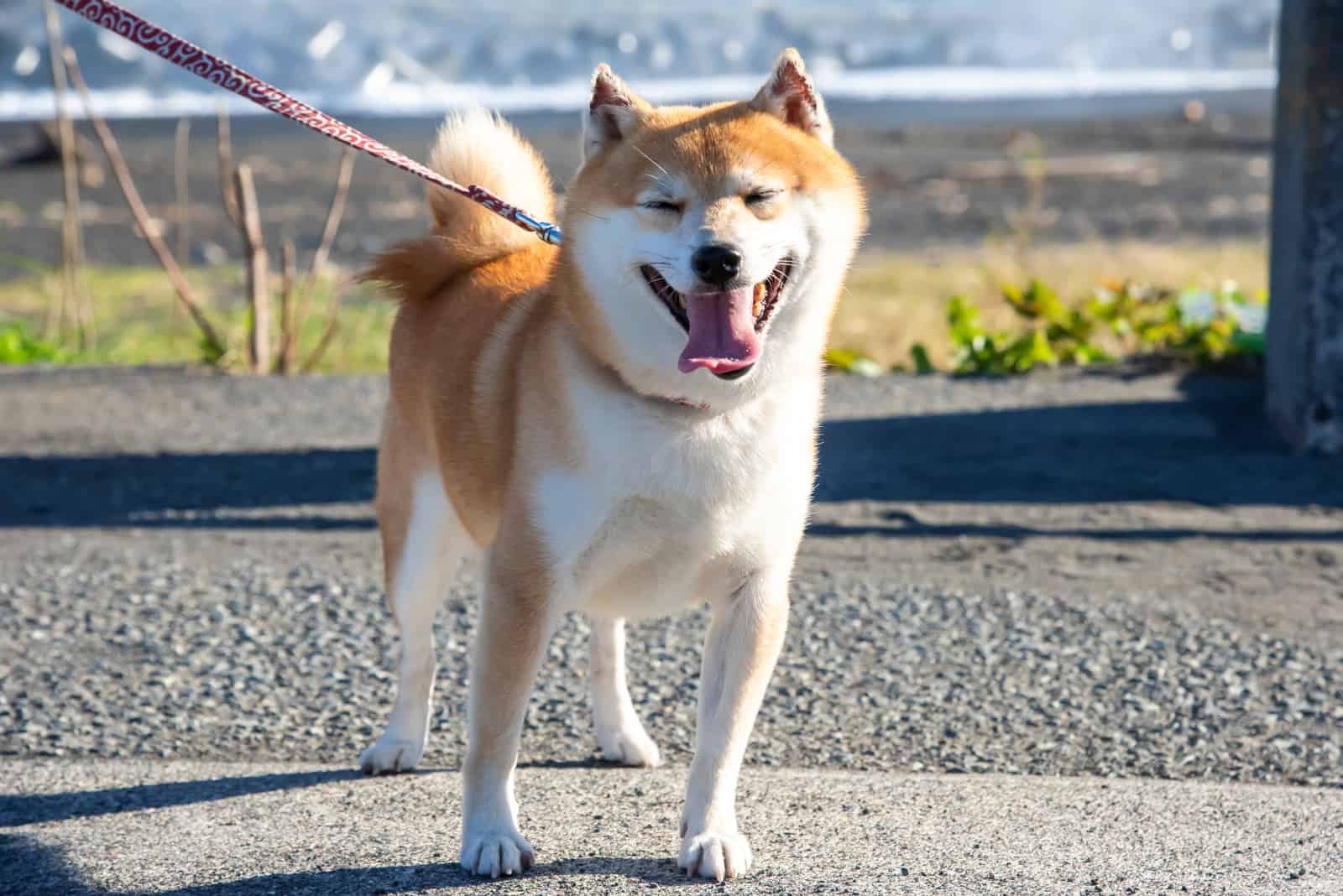
The biggest difference that can be noticed at first glance when you look at a Mame Shiba Inu and a standard Shiba Inu is the dog’s size. Mame Shiba Inus are much smaller than their counterparts.
This smaller size helps them to be more suitable for apartment living, which is the main reason behind their popularity.
In the modern age, more and more people are living in small homes – especially in Japan, where many people live in one-room apartments. Having a dog that doesn’t take up much space is a great way to get yourself a companion that won’t compromise your living area.
But, how small are we talking about?
Mame Shiba Inu Full Grown
While a regular Shiba Inu will reach anywhere between 14 and 17 inches in size, Mame Shiba Inus rarely grow to be taller than 13 inches, with some being as tiny as 10 inches.
The same difference can be noticed when it comes to weight. Standard Shiba Inus usually weigh 13 to 17 lbs, while Mame Shiba Inus are 10 to 14 lbs in weight.
As mentioned before, females are slightly smaller than males.
According to the Kennel Club of Japan (KCJ), which accepts this small version of Shiba Inus, Mame Shiba Inus can be even smaller than 10 inches. This allows them to be as tiny as Chihuahuas!
The only condition is that the dog has to have a healthy body and mind, and be purebred. Crossbreeds are not allowed, and all the dog’s traits should resemble the ones from their Shiba Inu parents.
Mame Shiba Inu Puppy
Mame Shiba puppies are smaller than puppies of the standard Shiba Inu, but not so much that the difference could be noticed at first glance. They might simply look like runts of the litter of a normal Shiba.
However, when they grow, they will stay fairly small. Some Mame Shiba Inus will have a growth spree until they are 6 months old when they’ll stop growing almost entirely.
Mame Shiba Inu Temperament

If you’re considering getting a Shiba Inu, you’re probably wondering about this dog’s temperament. This is especially important if you have small children and are looking for a good family dog.
Despite their small size and cute appearance, Mame Shiba Inus are not a good choice for a family pet. These doggies have extremely high energy levels that give them large exercise needs, which isn’t typical of house dogs.
In fact, due to their territorial and protective nature, as well as a fairly high prey drive, they are more suitable as watchdogs or hunting dogs than most standard family pets.
This also makes them not suitable for small kids. A Mame Shiba Inu won’t have enough patience to deal with kids and their energy. They’ll prefer to have their own space as they are independent dogs.
As such, if you do decide to keep a Mame Shiba Inu in a family with kids, you have to also teach your children how to behave around dogs. While Mame Shibas look like toys, they are living beings that demand respect. This is especially important if this is your child’s first Shiba Inu or your first dog in general.
For example, you need to teach your child not to pull on the Shiba’s curly tail or his pointy ears. A child shouldn’t carry a Mame Shiba around, and they should respect the dog’s desire to be left alone.
Kids also shouldn’t yell around the dog or toss noisy things. Despite their fierce nature, Shiba Inus are sensitive pups that don’t do well in overwhelming environments.
Fortunately, you can read their emotions quite well through their curly-cue tails – the same ones kids love to pull on. This can help you understand when your dog needs to be left alone.
For example, if a Mame Shiba Inu’s tail is held high and fluffed up, this is a good thing. This means they are happy, confident, and ready to tackle any task that might be ahead of them.
On the other hand, if the dog’s tail is down and tucked between his legs, they are likely frightened. A scared dog might end up attacking in self-defense, so this is something you need to be careful about.
Not just that, but their independent nature and strong will also make Mame Shiba Inus challenging to train. They will love doing things their own way, which can even make them appear somewhat mischievous.
As Mame Shibas are smaller than their standard counterparts, they are somewhat easier to manage compared to standard Shiba Inus. This is good news for everyone wanting to bring these dogs into their home.
Of course, temperament and attitude vary from dog to dog, not just due to genetics, but also due to the way their owners have brought them up. If you’re an experienced owner, you’ll likely know how to deal with independent dogs no matter what their size is.
Still, we would not advise leaving your Mame Shiba Inu alone with your children. While they are small, they might still bite a child or cause injuries. Also, their tiny bodies are fragile, and your kid might harm them by accident. You should always be present during every playtime among dogs and kids.
Mame Shiba Inu Dog Health And Life Expectancy
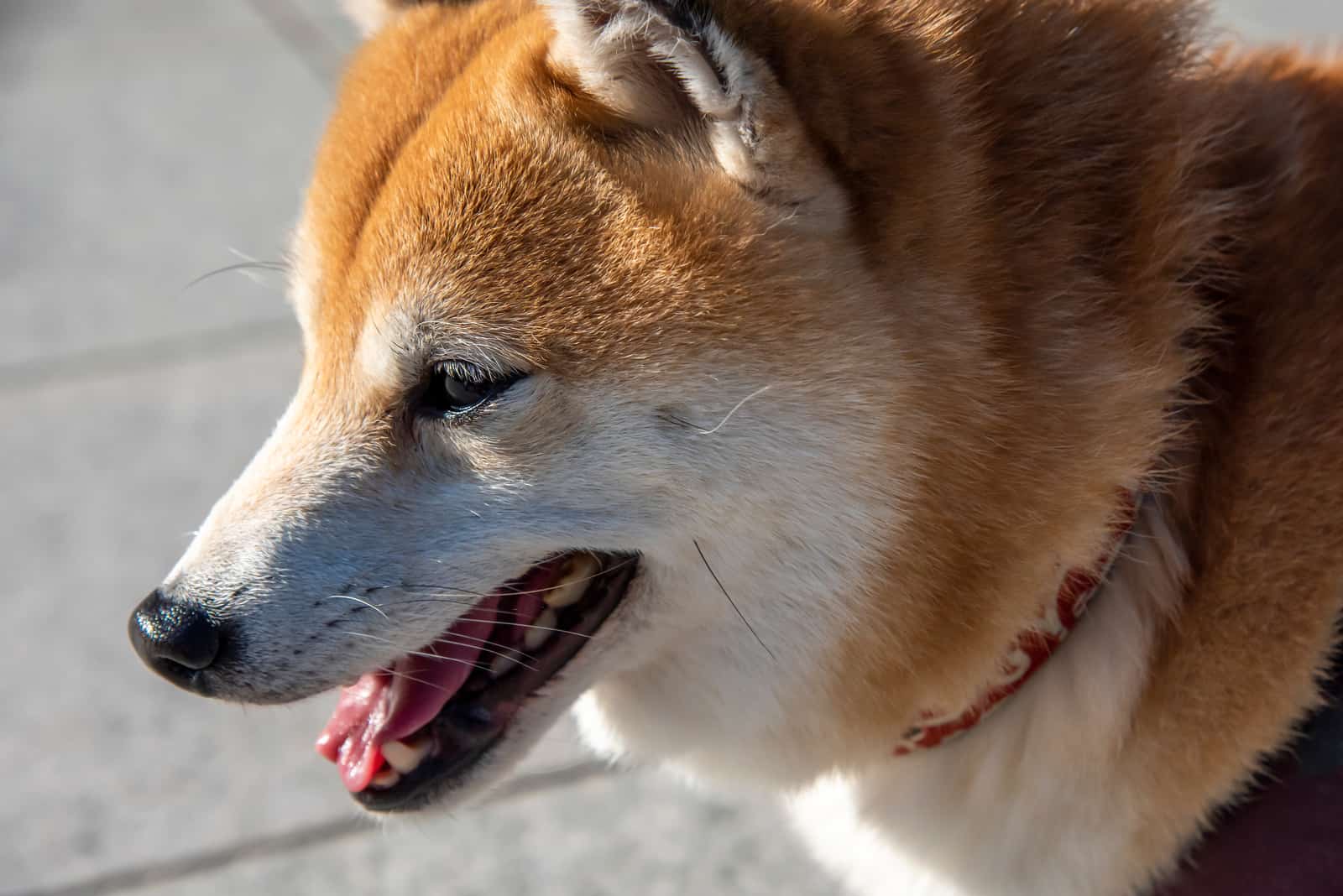
Unfortunately, breeding miniature dogs is always connected with various forms of health issues. Whenever you buy a toy version of a dog breed, you need to know that these pups come with certain health risks.
As mentioned before, it doesn’t necessarily mean that a miniature dog will be unhealthy. However, this is a risk that goes with it.
When it comes to Mame Shiba Inus, here are some health conditions these pups are prone to:
• Spinal problems: Mame Shiba Inus are prone to orthopedic issues, such as Intervertebral Disk Disease or Hip Dysplasia, due to their short, yet elongated bodies.
• Facial problems: Many Mame Shiba Inus have misaligned teeth or an enlarged esophagus due to their irregular growth.
• Eye diseases: One of the most common health problems that Mame Shiba Inus commonly face is glaucoma. This is caused by inadequate fluid drainage in the eye. If your Mini Shiba Inu is, in fact, a crossbreed of a Shiba Inu and a Mini Poodle, these issues can only become worse.
• Whelping complications: Narrow pelvic openings are a problem for small dogs.
• Problems with keeping warm: Mame Shiba Inus can have problems with keeping themselves warm. This is why you might consider buying dog coats or jackets for cold weather conditions.
If you happen to get a Mame Shiba Inu that is healthy, he might even live to an average Shiba Inu lifespan, which is 12 to 15 years.
The best option to determine whether you’re dealing with a healthy dog or not is to ask for the parents’ health records and documentation from the vet. A reputable breeder will be glad to provide you with such paperwork.
Are Mame Shiba Inus Recognized By Kennel Clubs?
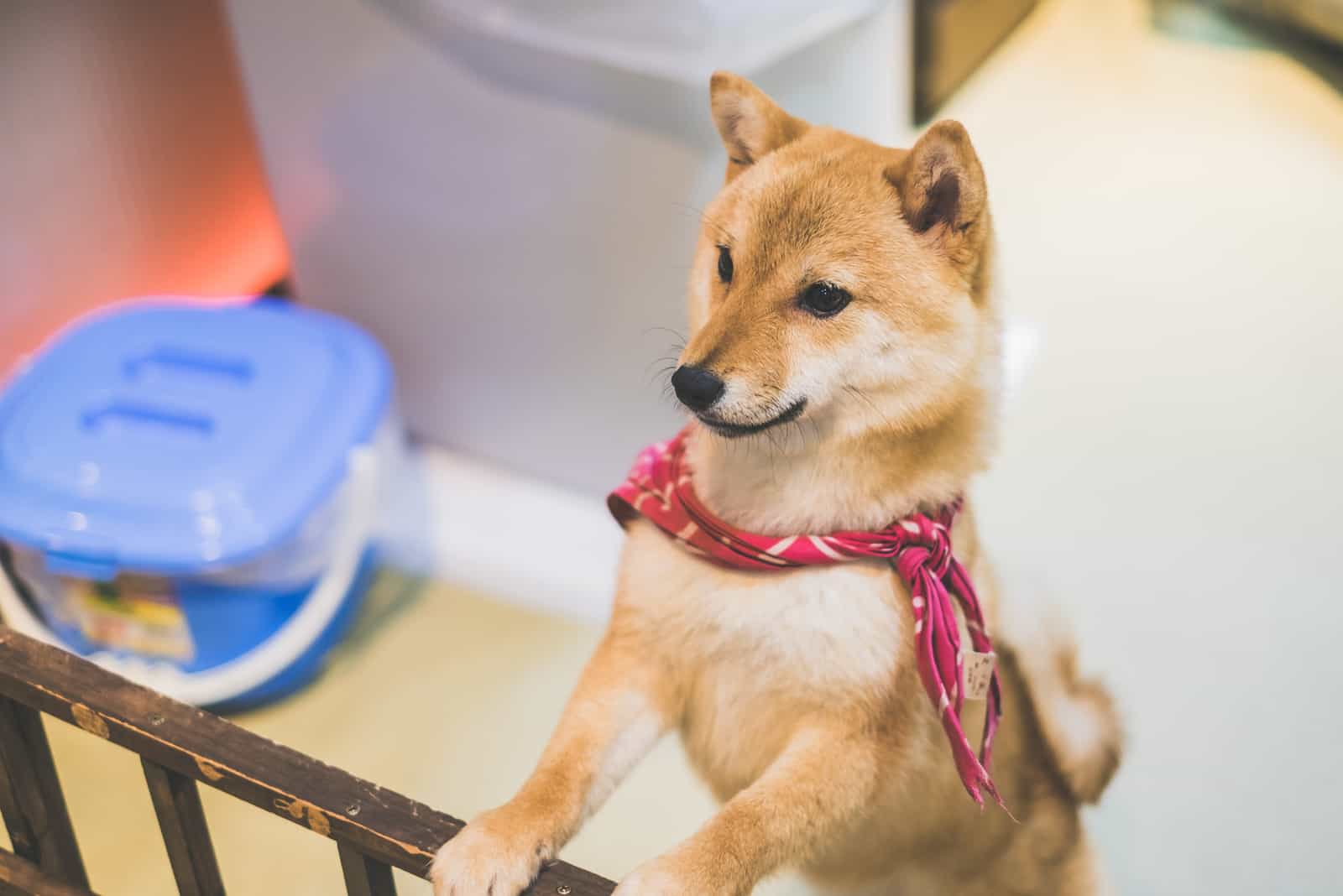
Most major kennel clubs don’t recognize Mame Shiba Inus, and there are several reasons behind this. The main one is that Mame Shibas deviate from the breed standard that also determines the accepted height of a dog of a certain breed.
At the same time, there are many health conditions associated with breeding dogs of such a small size. As you might have noticed, these are not simply small Shiba Inus, but dogs with specific genes and potential health issues that are the cause of their small size.
As such, most responsible breeders will frown upon the intentional breeding of Mini Shiba Inus, claiming that this is ruining the breed.
Many Mame Shiba Inu breeders are, in fact, unethical. They won’t care about the standard Shiba Inu temperament and health when creating their litters – they’ll only care about profiting off of these trending dogs.
The only large kennel club that recognizes the Mame Shiba Inus’ pedigrees is the Kennel Club of Japan.
No other kennel club in Japan recognizes this breed. This includes the Japan Kennel Club (JKC), as well as the Association for the Preservation of the Japanese Dog.
Mame Shiba Inu For Sale
Mame Shiba Inus are rising in popularity. In fact, there is even a Mame Shiba Cafe in Harajuku, Tokyo, in which guests can play with these tiny dogs while having their favorite drink!
This high demand has also led to many people wondering where they can find a Mame Shiba Inu puppy for sale.
As we’ve mentioned, finding reputable breeders is essential for making sure you get a healthy dog with a great life expectancy. There are many puppy mills or pet stores that sell what they advertise as Mini Shiba Inus, but you might end up with a sick dog.
In fact, as Mame Shiba Inus and regular Shiba Inu puppies are so much alike, it isn’t unheard of that you could buy a so-called Mame Shiba Inu pup that will grow up to be a medium-sized dog!
Mame Shiba Inu Breeders
To prevent unwanted scenarios, you should only buy from reputable Mame Shiba Inu breeders.
While some experts would state that no Mame Shiba breeder is ethical as they produce dogs with possible health defects, it is still wise to buy from a breeder who will openly discuss their breeding practices and how they have managed to produce dogs of that size.
A reputable breeder will allow you to see the dog’s parents so you can know what size and temperament to expect. They’ll provide you with all the necessary paperwork, especially regarding the dog’s health.
Don’t let a lack of a pedigree turn you off. As Mame Shiba Inus are not recognized by the AKC, they cannot be issued pedigree papers as their bloodline isn’t up to the breed standard.
The kennels that the dogs are raised in have to be clean and tidy, free of any odor. Also, all parent dogs have to have health certificates so you can know that they are free of many health conditions.
How Much Is A Shiba Inu?
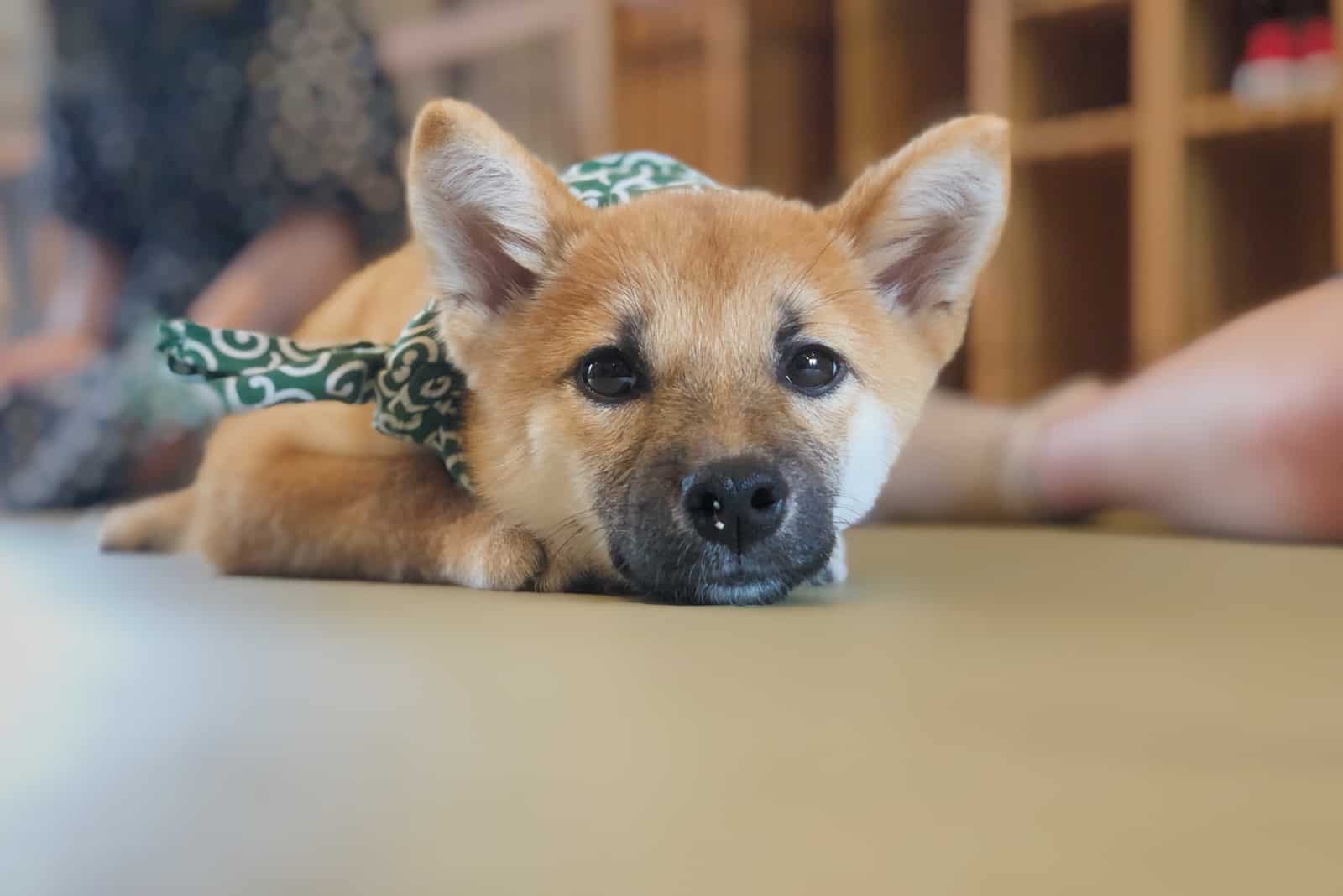
The price of a Mame Shiba Inu depends on many factors, such as their overall health and size, but also the location and the breeder’s reputation. In general, you can expect to pay anywhere between $1,200 and $3,000 for a Mame Shiba puppy.
Don’t be afraid to pay a bit more if a breeder is willing to give you a health certificate. When dealing with dogs that can be prone to various health issues, it’s important to invest at the initial price so you can be certain you’re getting the best dog possible.
By saving on a dog, you might end up with a sickly pup. Not only will you be responsible for spending much more than the initial price on vet bills, you’ll also have to deal with the emotional consequences of possibly seeing your dog suffer.
Most breeders that sell dogs cheap are either backyard breeders or puppy mills. These breeders don’t care about the health of the puppies or their parents as their only goal is to profit from selling these rare dogs.
Always ask for references and read other people’s testimonials. If you buy a crossbreed by accident, not only have you been scammed, but you’re also risking getting a dog with a non-standard temperament. If you’re looking for a family dog, this can be a huge problem.
Mame Shiba Inu Adoption
If paying several thousand dollars for a Mame Shiba puppy is too much for you, you can always try to adopt. There are many purebred dogs left at shelters, and you might even run across a Mame Shiba Inu.
Still, you need to be aware of these few issues:
• When you adopt a dog, you will know nothing about his lineage. This can mean that your new puppy is prone to various genetic disorders. As Mame Shiba Inus are somewhat unhealthy as it is, chances are the adopted dog might have some health condition.
• You’ll have no way of knowing whether a dog is purebred or a crossbreed, and the dog’s temperament might be nothing you expected it to be.
• Many abandoned dogs have been abused or neglected, which can lead to further behavioral problems.
• If you’re adopting a puppy, there is no way of knowing how big he’ll grow up to be.
Is A Mame Shiba Inu The Right Dog For Me?
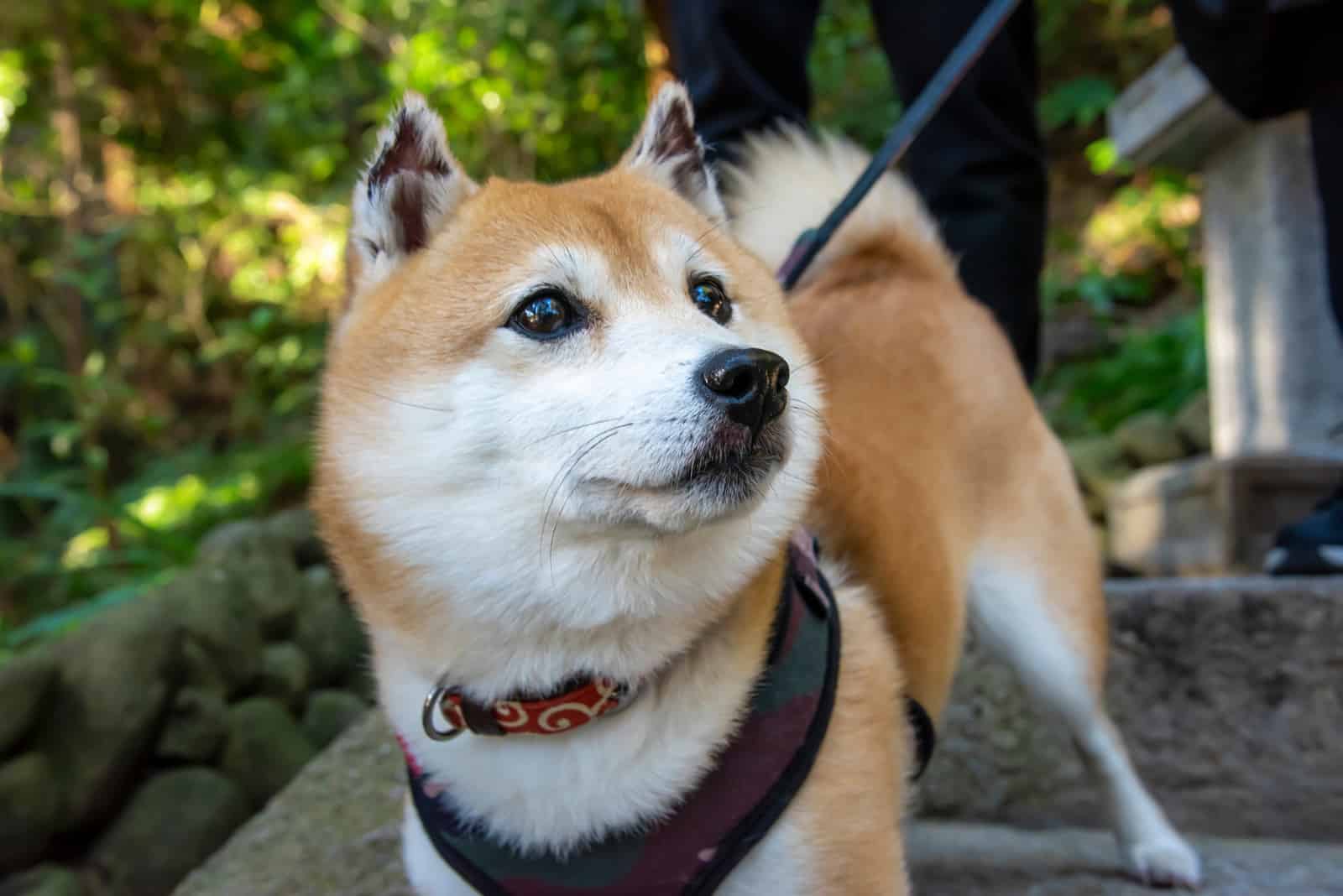
Now that you know all this, it’s time for the final question: Is a Mame Shiba Inu the right dog for me?
The answer to this depends on what you’re expecting from a dog, and what type of household you have.
Mame Shibas are tiny dogs that don’t require lots of living space. However, they have plenty of energy, and if you prefer staying in your house throughout the day, the two of you won’t get along. If a Shiba Inu doesn’t get its energy depleted, he can become destructive.
At the same time, these pups don’t get along with small kids. They prefer to have their own space, and they don’t have enough patience to deal with children who would like to play or manhandle them because they don’t know any better.
Finally, you need to be aware that these dogs might come with their own set of health problems. Vet visits can become a usual thing, and you need to have the funds to be able to properly take care of your four-legged family member.
On the other hand, if you’re looking for a cheerful companion that will make every day brighter, but won’t require constant attention, a Mame Shiba Inu might be perfect for you!
These dogs are affectionate, but far from clingy, and they’ll express love in a way that is particular to them. They’ll love you forever, and you’ll be the most important person to them.
Not just that, but they’ll be good watchdogs, and keep your home safe from intruders. Don’t let their small size fool you – these are fierce dogs that would gladly give their life for their favorite human.















